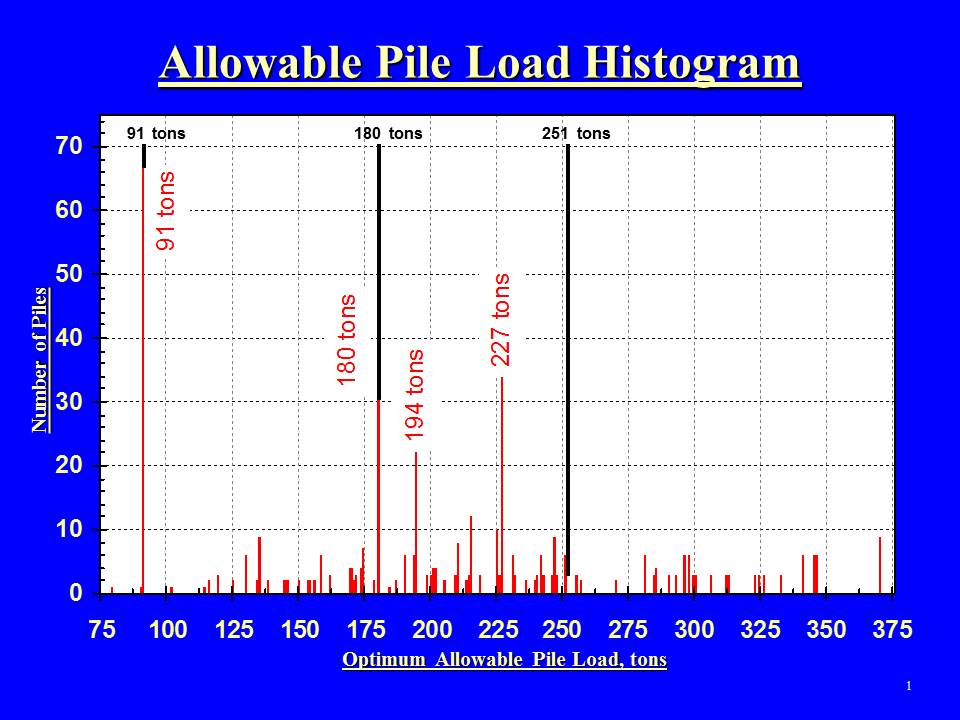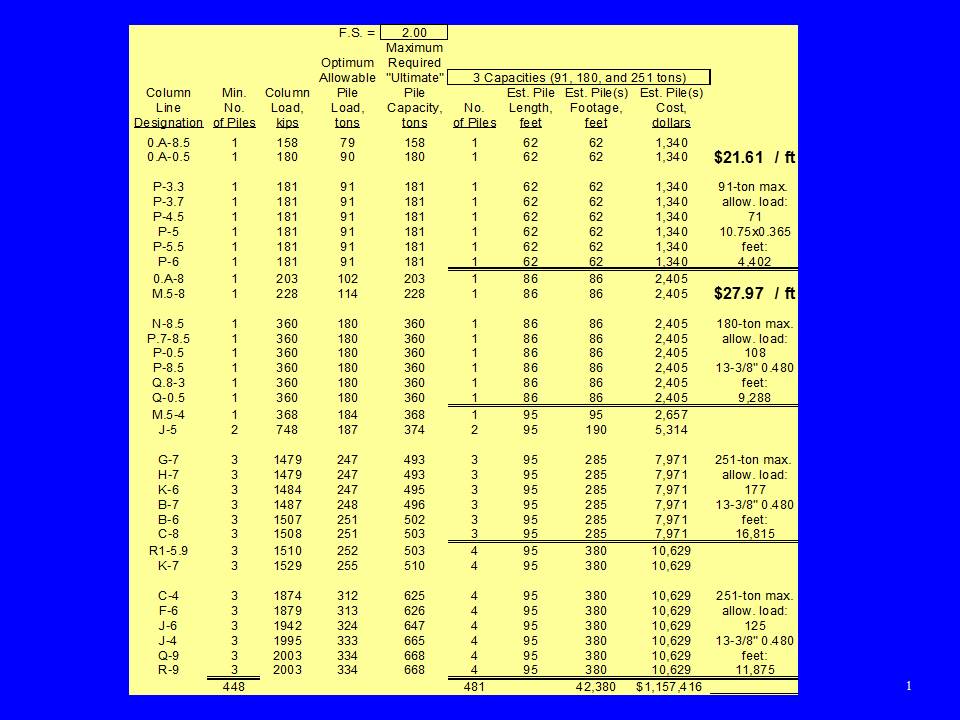Improved Pile Design: Load Matching Evaluation (Part 2)

As a continuing service to our clients, Atlas Tube routinely enlists the services of industry leaders in matters related to driven pipe piles. This is the third in a series of topics provided at our request by Wagner Komurka Geotechnical Group, Inc.
Our last pipe piles series presented the concept of foundation support cost as it applies to driven piles. One of the concepts stressed was that, in most instances, piles with higher allowable loads are more-cost-effective than piles with lower allowable loads. An important caveat to using higher-allowable-load piles on a project is that structure loads warrant their use (i.e., unutilized capacity is not installed). In our last blog, we introduced the concept of load-matching evaluation, and defined optimum allowable pile load ― the column design load divided by the minimum required number of piles at each column location.
However, it is impractical to install optimum allowable load piles beneath each column. Such a design would result in an excessive number of different allowable pile loads on a given project. In this post, we will illustrate the quantitative determination of which allowable load(s) is/are best-suited for a project, including an economic evaluation.
The information required for a load-matching evaluation includes the design compression load at each column location, and the minimum number of piles required to satisfy structural stability. For load-bearing walls and grade beams, or pile-supported floors, loading and minimum pile spacing information is required. From this information, a histogram is produced, indicating the frequencies of occurrence of specific optimum allowable pile loads, from which the number and magnitudes of potential allowable pile loads for the project are selected (See Figure 1). Structural engineers can perform this evaluation without geotechnical input.

Once the potential number and magnitudes of allowable pile loads are selected, a geotechnical engineer will determine the most-appropriate pile type(s) and section(s) based on the target allowable loads and subsurface profile, in addition to estimating depth vs. ultimate capacity profiles. For the potential allowable loads, requisite ultimate capacities must be established. These capacities are a function of the safety factor for design, usually associated with the construction-control method used to develop the driving criteria. Lastly, installed pile costs per foot must be estimated for each candidate pile section.
This information can be assembled and evaluated as presented in Figure 2 (see below). Note that such a load-matching evaluation can be used to quantitatively assess the design and economic effects (i.e., the pile count and installed footage) of using various pile sections installed to various allowable loads. The process can be iterated by modelling different combinations of allowable loads and/or pile sections to optimize design and minimize cost.

For more information about cost-effective design of deep foundations, visit wkg2.com for available webinars and technical papers. If you missed any of our previous blog posts, you can access them here:
